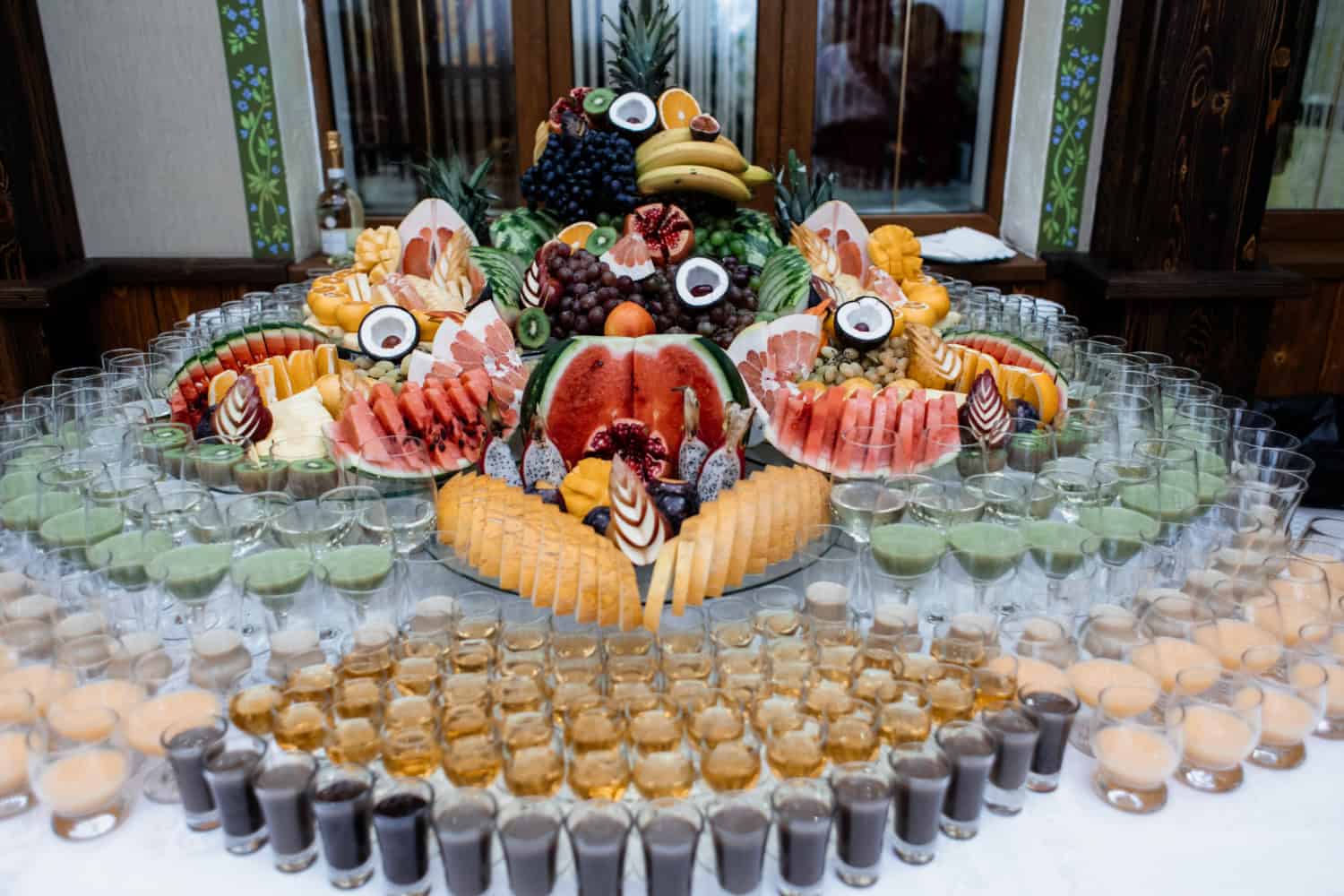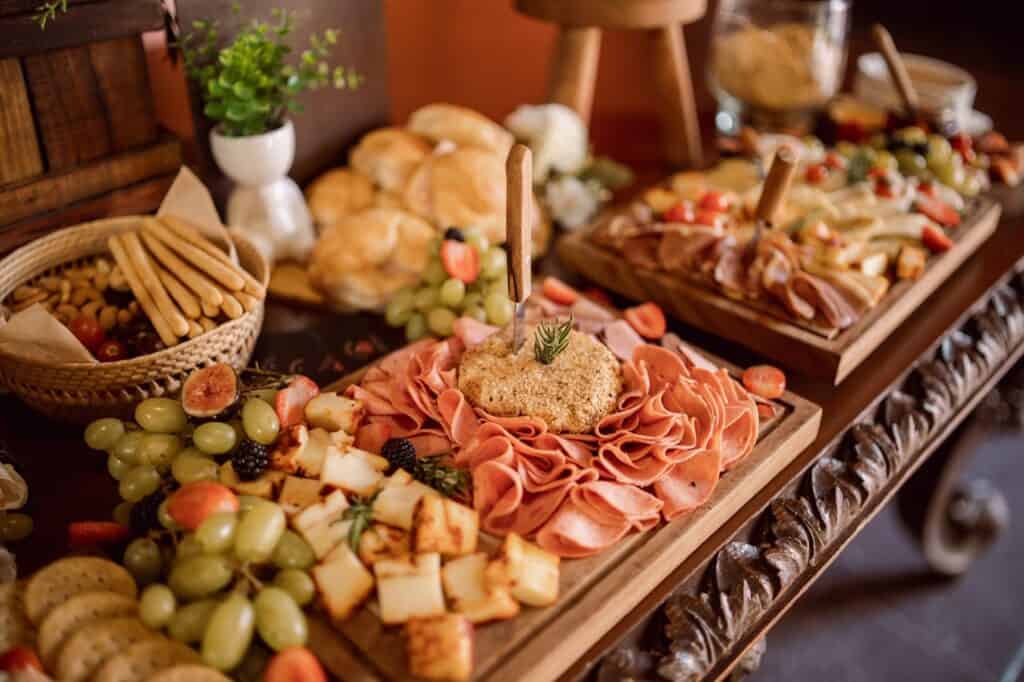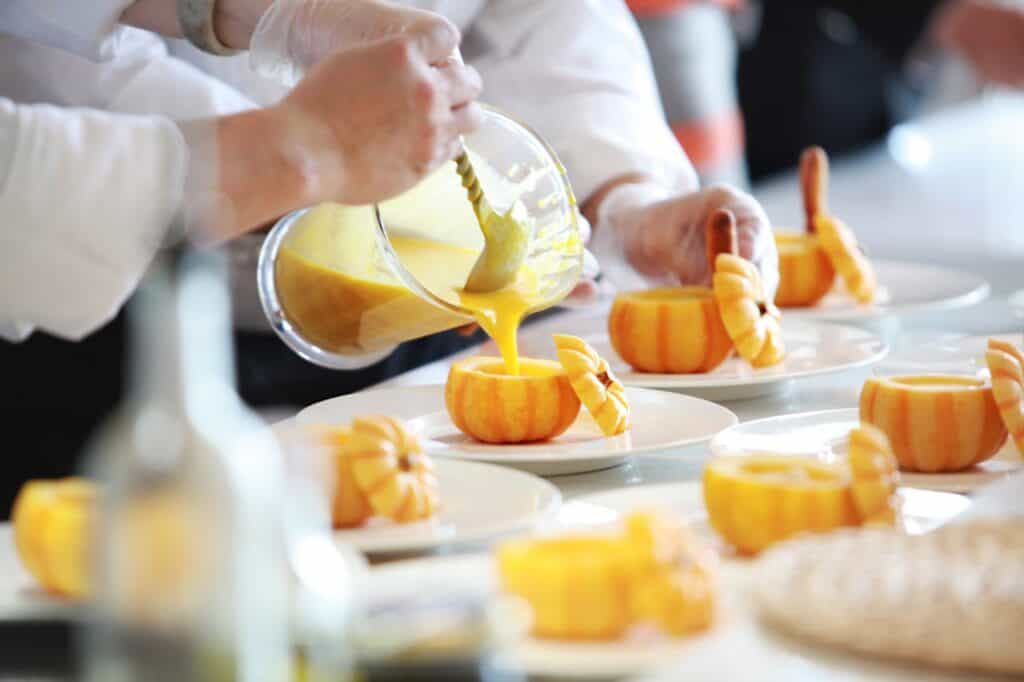
By Jermaine Thomas January 24, 2025
Interactive dining is transforming the way we think about catering and guest engagement. By immersing guests in hands-on food events, caterers are creating memorable experiences that go far beyond traditional dining. Let’s explore the growing trend of interactive catering, its benefits, and how to craft these experiences to captivate guests.
What is Interactive Dining?
Interactive dining involves engaging guests directly in the preparation, customization, or presentation of food during events. Unlike traditional catering where food is served in a standard format, interactive catering transforms the dining experience into an activity. It encourages participation, conversation, and a deeper appreciation for food.
From live cooking stations to build-your-own dishes, interactive catering is about making food more than a meal—it becomes an experience. For example, events may feature a sushi-rolling station, a personalized pasta bar, or a dessert table where guests assemble their treats. These setups invite attendees to get creative and feel connected to their food.
The appeal lies in its ability to create a memorable and social atmosphere. As food is a universal language, interactive dining serves as a platform to connect people while making the event dynamic and enjoyable. This innovative approach also caters to diverse tastes and dietary preferences, making it inclusive.

Why Interactive Catering Captures Attention
Interactive catering has gained popularity for several reasons. It not only enhances the guest experience but also differentiates events. Guests often remember the unique moments rather than the menu itself.
One reason this trend resonates is the growing interest in experiential events. People are looking for activities that engage all their senses. Interactive dining ticks these boxes by combining visuals, aromas, textures, and tastes. A live taco-making station or an engaging wine-and-cheese pairing table can draw guests into the culinary process, creating a lasting impression.
Moreover, it’s a fantastic way to break the ice and encourage conversation. For instance, guests bonding over creating their personalized pizzas or enjoying the process of cooking on a shared griddle fosters connection. It transforms the event from passive to active, where food becomes a conversation starter.
Interactive catering also aligns with the desire for personalization. In an era where customization is key, allowing guests to choose their ingredients or toppings ensures everyone feels catered to. As people become more conscious of their food choices, this hands-on approach empowers them to make decisions based on their preferences.
Types of Hands-On Catering Experiences
Live Cooking Stations
Live cooking stations are among the most popular forms of interactive catering. These setups feature chefs preparing food in real-time, often with input from guests. Whether it’s a stir-fry station, crepe-making corner, or grill station, the appeal lies in the performance and freshness of the food.
For example, at a stir-fry station, guests can select their preferred ingredients—vegetables, proteins, sauces—and watch the chef turn it into a delicious dish within minutes. This adds a layer of excitement, as the process unfolds in front of them. Guests often ask questions, making it educational as well as entertaining.
Live cooking also provides a sensory experience. The sizzle of the pan, the aroma of spices, and the visual presentation captivate attendees. It transforms the event into something more immersive and memorable.
Build-Your-Own Food Bars
Food bars invite guests to customize their dishes. Popular options include taco bars, salad stations, burger setups, and dessert tables. These stations are simple to organize yet deliver a big impact.
For example, a taco bar might feature an array of tortillas, fillings, and toppings. Guests can select from grilled chicken, beef, or vegetarian options, followed by a variety of salsas, cheeses, and fresh vegetables. This approach caters to diverse preferences and ensures that everyone leaves satisfied.
What makes food bars engaging is the element of choice. It also allows for creativity as guests can experiment with flavors. For those with dietary restrictions, this setup provides reassurance that they’ll find something suitable.
DIY Desserts
Dessert stations are an undeniable crowd-pleaser. From cupcake decorating corners to build-your-own ice cream sundaes, these setups let guests embrace their inner pastry chef. A dessert table filled with sprinkles, sauces, fruits, and candies invites attendees to have fun while satisfying their sweet tooth.
For example, a s’mores bar can feature marshmallows, graham crackers, chocolate squares, and even twists like flavored marshmallows or gourmet toppings. Guests toast their marshmallows and assemble their creations, making it both interactive and nostalgic.
These dessert stations appeal to both adults and children, making them versatile for various types of events. They’re also highly photogenic, often inspiring guests to share their creations on social media—a bonus for event hosts.
Benefits of Interactive Dining for Events
Interactive dining offers numerous advantages for both guests and hosts. These benefits go beyond just the food.
Creates Lasting Memories
Interactive catering leaves a lasting impression. Guests often remember events based on how they felt and what stood out. Watching a chef flambé a dessert or participating in rolling sushi leaves behind vivid memories.
Promotes Social Interaction
One of the biggest advantages is how it encourages conversation and collaboration. When guests participate in activities like grilling or mixing cocktails, they naturally interact with those around them. It’s an excellent icebreaker, especially for events with people from different social circles.
Accommodates Dietary Preferences
Customization is a game-changer for accommodating diverse dietary needs. Interactive setups allow guests to choose their own ingredients, making it easy to offer vegan, gluten-free, or allergen-free options without added complexity.
Showcases Culinary Skills
For event hosts or caterers, interactive setups are an opportunity to showcase creativity and expertise. A chef’s ability to perform live enhances the perceived value of the catering service.
Tips for Planning Interactive Catering
Know Your Audience
Understanding your audience is crucial. Are they adventurous foodies, or do they prefer more traditional dishes? Younger crowds may enjoy trendy concepts like DIY sushi rolls or bubble tea stations, while older guests might prefer interactive wine pairings.
Choose the Right Setup
Space and logistics play a big role. Make sure the setup fits the venue and the number of guests. Avoid overcrowding stations and plan for efficient flow to prevent long lines. Consider hiring additional staff to guide guests through the process smoothly.
Incorporate Themes
Interactive dining can be tailored to match an event’s theme. A Mediterranean night could include a hummus-making station or build-your-own pita wraps. For a tropical vibe, consider a tiki cocktail bar or fresh fruit carving display.
Focus on Presentation
The visual appeal of interactive setups matters. Vibrant ingredients, neatly arranged toppings, and attractive signage make a big difference. Guests are drawn to setups that look inviting and professional.
Don’t Forget Hygiene
Hygiene is critical in interactive catering. Provide utensils for serving, keep ingredients covered, and station staff nearby to maintain cleanliness. With guests handling food, these measures are non-negotiable to maintain safety standards.

Interactive Catering in the Digital Era
The rise of social media has amplified the appeal of interactive catering. Guests love sharing their experiences online, making these events highly Instagram-worthy. Creative setups like colorful dessert stations or artisanal pizza-making corners are sure to attract cameras.
Hosts can leverage this trend by incorporating photo-friendly elements such as decorative backdrops, themed props, and branded signage. Encouraging guests to share their creations with event hashtags also extends the event’s reach.
Additionally, technology can enhance interactive catering. QR codes on stations can provide recipe details or fun facts about ingredients. For larger events, virtual cooking demos can complement live stations, offering a hybrid experience.
Conclusion
Interactive dining is revolutionizing the catering industry by transforming meals into experiences. From live cooking stations to build-your-own food bars, these hands-on events bring people together in an engaging and memorable way. With careful planning and creativity, interactive catering can elevate any event, delighting guests and leaving a lasting impression.
By embracing this trend, hosts can ensure their events stand out while offering guests something truly remarkable. It’s more than just food—it’s an opportunity to create connections and unforgettable moments.